|
【现场】苏鹏个展“感今惟昔”3日在北京上苑艺术馆
[2017-9-29 21:04:05]
【现场】苏鹏个展“感今惟昔”3日在北京上苑艺术馆
Supeng solo exhibition: With Nostalgia from the Present in Shangyuan Art Museum
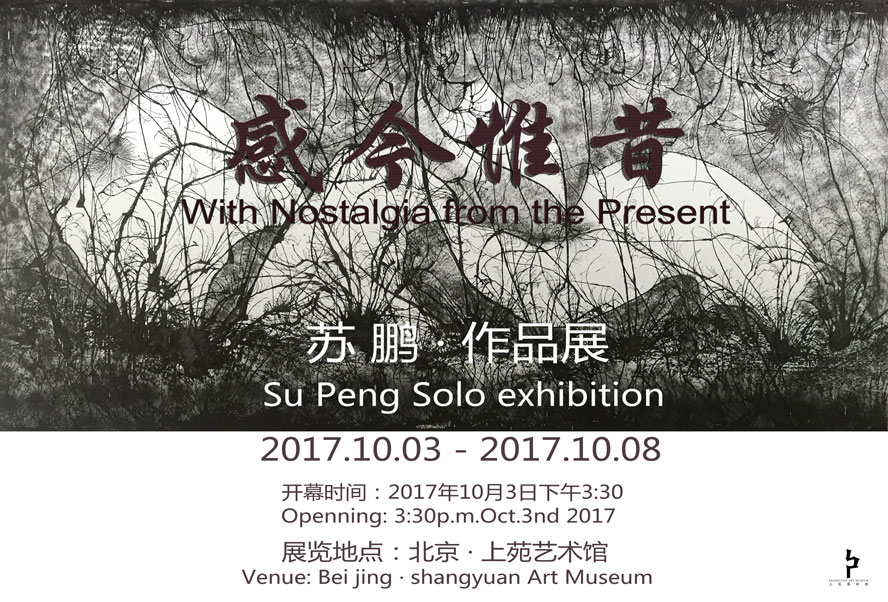
艺术家| Artist:苏鹏 Supeng
开幕时间| Opening:10.3 15:30 pm
展览时间| Exhibition Dates:10.3- 10.8.2017
地点|Venue:
北京上苑艺术馆BEIJING Shangyuan Art Museum
地址|Add. 北京市怀柔区桥梓上苑艺术馆
Shangyuan Art Museum , Qiaozi County, Huairou District, Beijing
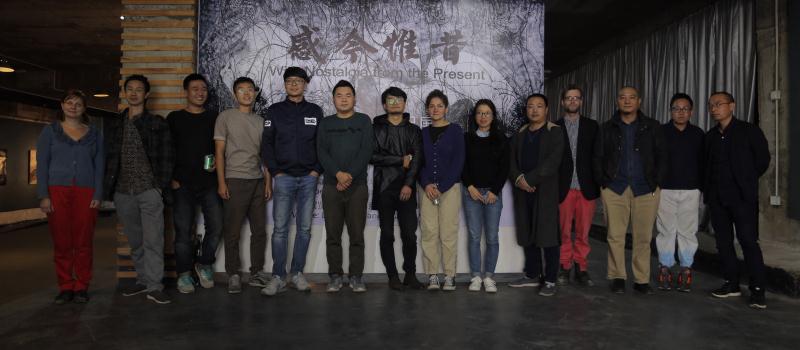
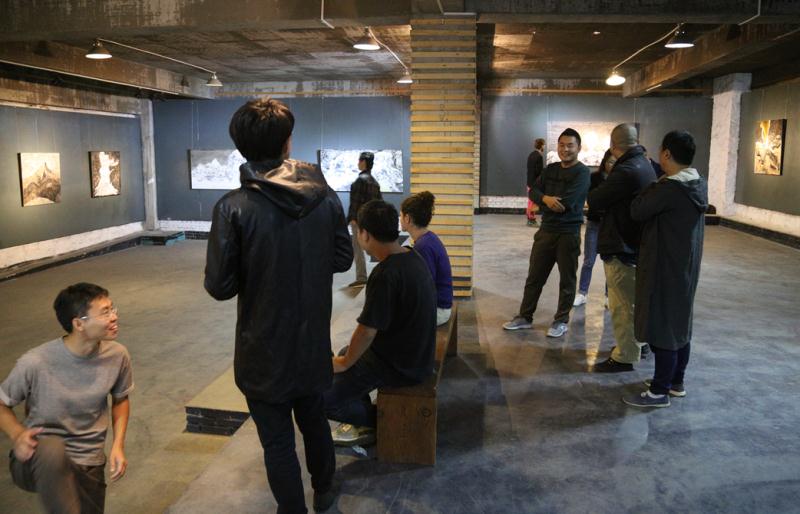

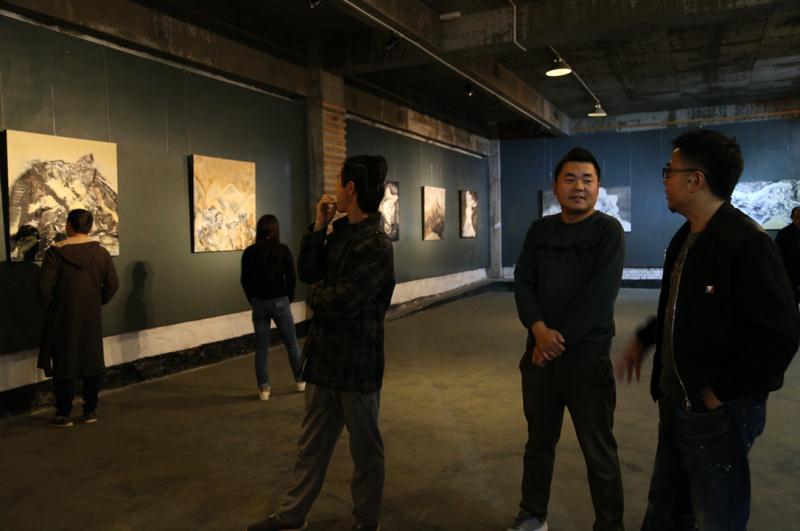
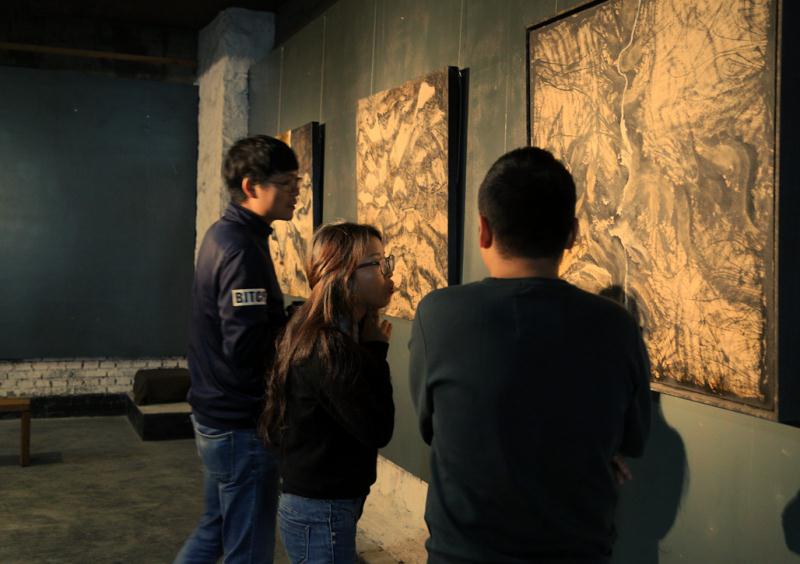
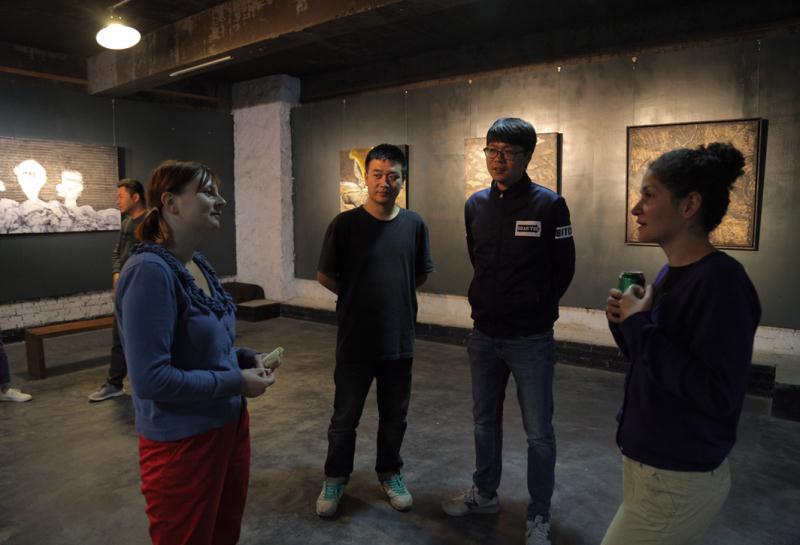

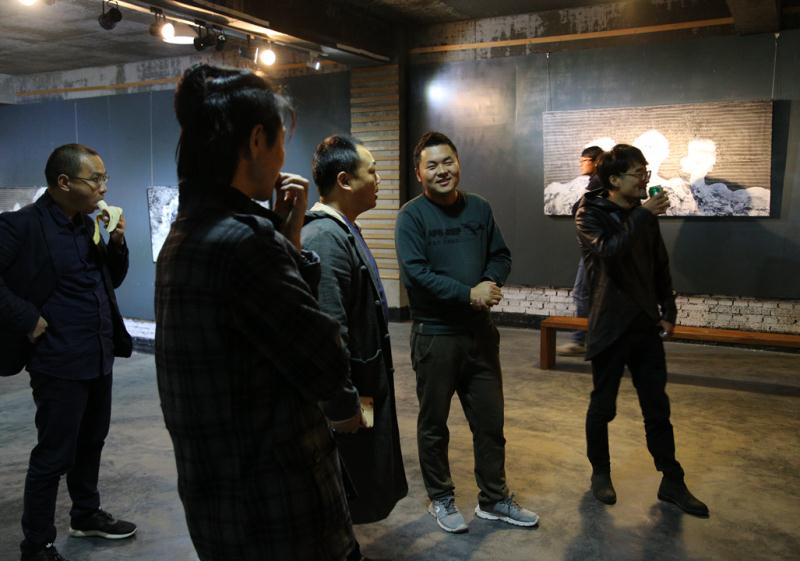
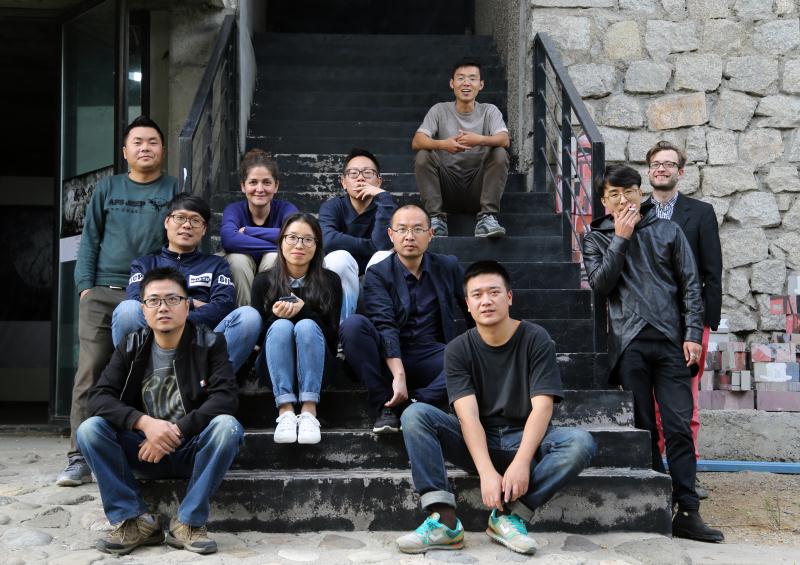
自述:
创作于我而言,与我同在一个生命体,共存亡。绘画创作属于我生命中的一部分,会一直伴随着我,直到终老。
很多朋友和欣赏我作品的朋友会称呼我为“艺术家”,其实对于此称呼我是不认同的,个人觉得我暂时只能算的上是一名画家,且是一名纯粹的画家。在我的创作中现一直限于架上绘画创作,这只是现当代多元化“艺术”中的一种。很多人寓言架上绘画即将走向灭亡,实在是可笑,人性不消失,个人情感尚存在于这个社会中,架上绘画将永不会消逝。我是一名画家,将个人无法用语言表达的情感实实在在的呈现于画面中。
创作在我的生活中,是帮助自我表达的一种形式。我的绘画创作作品上多呈现高原的情与景,源于我从小生活的环境,随之长大又消失于我生活的环境,在这种存在与消失之间若影若现,将此呈现在我的绘画作品中似乎能让我感受身处其中。在我创作时,很少去想绘画艺术的本体语言这些专业性的东西,我仅仅是将自己所想表达的内容通过不同的手段以及方式表现出来。不仅仅是在技法上的表现,更多的是通过材料属性的特质以及绘画创作中偶然瞬间趣味的保留,以最终能达到自我表达“幼时家乡”的情感。“偶然瞬间”是我个人对架上绘画艺术的探索,并非技巧的描摹。与其说是对绘画艺术的一种实验,还不如说是保留内心对绘画艺术未知性的一种探索与追求,正是因为这种未知性鞭策着我不停前行。
绘画创作的路很长亦很艰辛。在这个多诱惑,快节奏的社会中,放慢脚步,从一而终是一种情怀。在我的创作道路上时刻警醒自己,勿忘初心,方得始终。
Statement on Painting
Painting has been clung to and become an integral part of my life. It would be always with me till the end.
Many friends in my personal life and who appreciate my works call me “An Artist”. Actually I don’t really agree on the title. Instead, I regard myself as a painter, a pure painter. My creations are limited to easel painting, simply one of the modern diversified arts. Regarding this art, a lot of people shout out that it’s going to its doom, which is indeed ridiculous. Easel painting will never die out, since humanity won’t, and personal emotions always exist in the society. As a painter, I present the feelings one cannot speak in words through the genuine pictures.
Painting is a way of self-expression. My works usually show the sentiment and scene of the Loess Plateau. Appearing in my childhood and then disappearing as I grow up, the special environment is displayed in my paints, and it seems that I still live there. While painting, seldom thinking about the professional knowledge like the ontology language of painting art, I merely express what I want to express by different methods. More than the technical performance, I eventually convey my affection to the hometown by the material features and the retention of fun in occasional moments. Occasional Moment is not the imitation in techniques, but my own exploration to easel painting art. Rather than say it’s an experiment on painting, you can consider it as seeking and pursuits to the unknown area of painting art. It’s just the unknown that spurs me to keep moving forward.
The road of painting is long and hard. In this temptatious and quick-paced society, it’s a precious temperament to slow down and be dedicated. I would always remind myself that persistence on the original dream comes out a consummate ending.
作品选刊:

苏鹏《巨石与枯枝》100×200cm 布面油画 2017年(上苑艺术馆收藏)
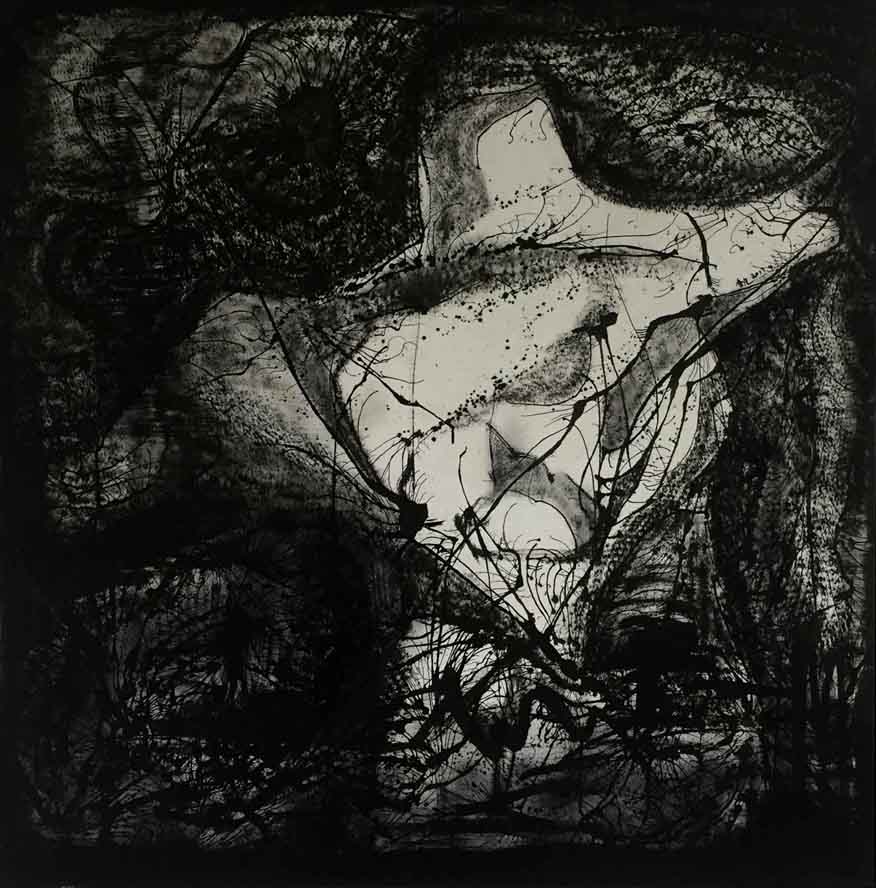
《残躯》100×100cm 布面油画 2017年 苏鹏 (上苑艺术馆收藏)
“西北情结”——谈苏鹏绘画
文/张林杰
我与苏鹏相识多年,他的绘画成长我相对比较了解。他从入学开始对绘画有执着的热爱后我便开始关注他。本科期间为他和他的同学策划过一个三人展览。当时就为他们的绘画感到惊讶,虽然他们画面不是太成熟,但是他们充满了热情。那时苏鹏不怎么爱说话,只要到了酒桌上喝开了,就很能表达,尽显西北汉子的风采,他的爽朗性格谦和的为人让我很喜欢。
“画品即人品”我是非常认同的。一个人绘画的格调高低取决于其人品。苏鹏的作品和他的为人是有一致性的。他看待问题很执着,但是和人沟通却非常谦逊。正如他的绘画一样,有着直接的意象,但是语言表达却很含蓄。纵观他的绘画历程我认为有一条线索是他一直致力表达的——“西北情结”。不论早期还是现在的作品都有一种西北人文的情愫在里面。不同时期画面风格和符号选择都是苏鹏性情与记忆中沉淀出来的。我姑且把他的作品分为四个时期:懵懂时期、白色时期、材料语言时期、大意象时期。
懵懂时期
这个时期他刚入学不久,摆脱高考模式的束缚。对于绘画有全新的认识,很快的进入解构训练阶段。鸟、山、树等符号在他的画面中不断出现,此时画面形式、手法、色调都比较多样,也是他在寻找多种可能性的阶段。而此时他的画面在山的形象中开始出现“窑洞”的符号,也就是窑洞的符号让他找到了一个符合自己情感的突破口。
白色时期
此时他开始把“窑洞”符号放大,并且把整幅画面全部画成白色。看这批作品的时候你会有一种置身雪景下的西北农村的感觉。很纯净的白色环境下窑洞的形态若隐若现,这是一种场景,是在大都市生活的我们很难见到的场景,更是不断消失的农村文化的写照。很多中国农村的文化现象都开始变成一个个记忆中的片段。他所表达的正是通过记忆对于一个个片段的再现,在喧闹的都市生活中乡村的情感的标记。这批作品在绘画层面来说是对于形式主义的探索,点、线、面的组合在其画面中不断的寻找可能性。但是形式主义的表达是很艰难的,特别是找到符合自己情感的表达更是难上加难。因为这需要经历一个漫长而枯燥的训练阶段。
材料语言时期
白色时期作品遇到的瓶颈让他开始找寻新的方法,此时开始关注材料语言。在绘画中材料本身就有其可言说的,以至于很多艺术家把材料单独拿出来做作品。博伊斯、塔比埃斯、基弗等等这些艺术家都是发现了材料本身的魅力,用以表达其艺术。苏鹏正是看到了这一点,在其“窑洞”元素上广泛的运用不同的材料。同时对于颜料的运用也开始变得更加考究,这个时期的作品在画面的处理上变得更加成熟,在表达内容上解构的更加彻底,可以说这个阶段更多的是在解决技术问题。
大意象时期
在解决了技术问题后进入了全新的高度。画面中“窑洞”的符号开始模糊消失,取而代之的是大意象中的山石、河流、人物、杂草等等。这批作品中绘画性被削弱,偶发性被重视,而画面中呈现出的形象多数是根据偶发的呈现来改造的。但是他又能把偶发的形态控制的很好,这就使得这批作品更加的成熟。作品中虽然“窑洞”符号消失了,但是画面中的色调,结构,物象无不透露出西北人文的特性。《巨石与枯枝》这张作品是我认为最具代表性的,画面中如荒漠中的杂草,而杂草充满了野性的生命力。穿插的杂草凝结成了一张网,这张网隔开了观者与网背后那巨大的不可捉摸的空间,也隔开了现代文明与野性文明的距离,留给我们的是对这张网的思考。《朝圣之路》这张作品非常精彩画面中有着中国传统山水的意象却又有着对传统意象的反叛,有着隐隐约约的人文痕迹却又被粗拙的笔墨埋藏其中。画面上半部分有如飞来之石一样牢牢的扎在画面中心。看这张作品会感觉非常的畅快淋漓。直接、狂野却又很有章法。这与作者本人的性情如出一辙。
看过他四个时期的作品会更清晰的感受到到他绘画中“西北情结”的演变过程。表现的物象在改变,但是情感没有改变,追求的东西没变。作为一个生活在南方的西北人,种种环境、文化的差异让他心里的那份情结更加的珍贵。正是这种情感让他的创作有如源头活水一般不断创造出更多优秀的作品。
苏鹏是一个很有艺术理想的人,他曾和我说他对于画画并不急于求成,只希望在一生中能够在艺术史上留下名字。我很钦佩这样有理想的人。现在中国的艺术环境被各种利益驱使,很少有人能够静下来花时间去沉淀自己的艺术。而真正好的艺术一定是经过个人不屑的努力通过时间沉淀下来的,这是不断否定自己的漫长的痛苦过程。只有做好了充分的准备和有足够勇气和毅力的人才能走下去。我想他就是这样的人。
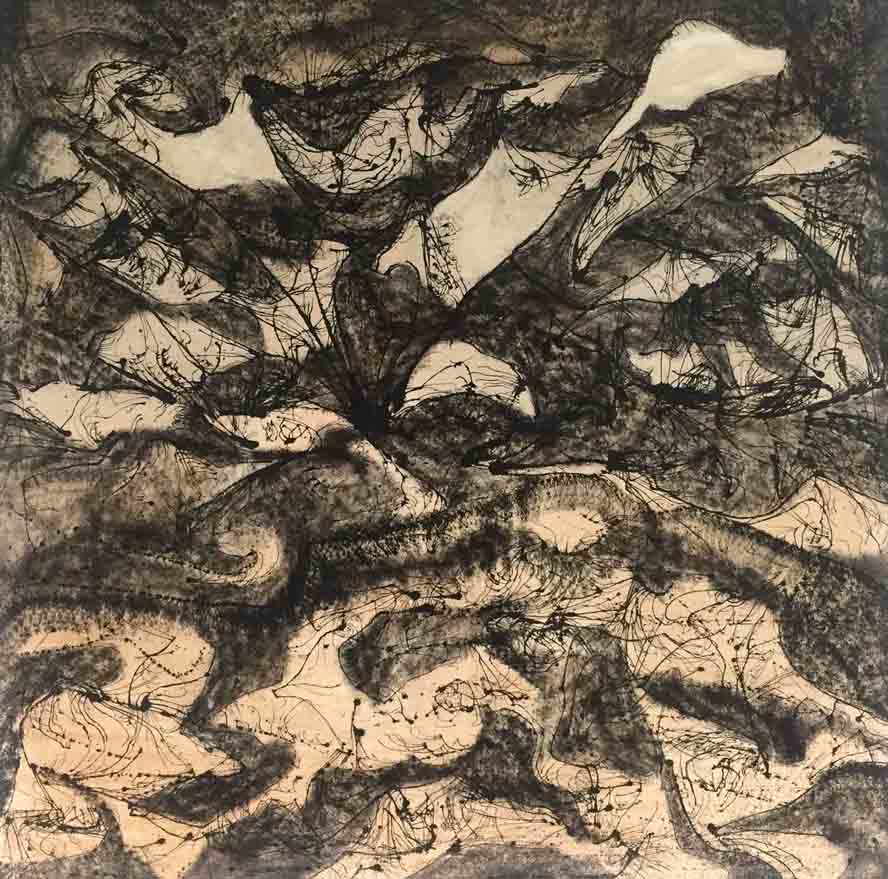
《记忆之田埂》100×100cm 布面油画 2017年
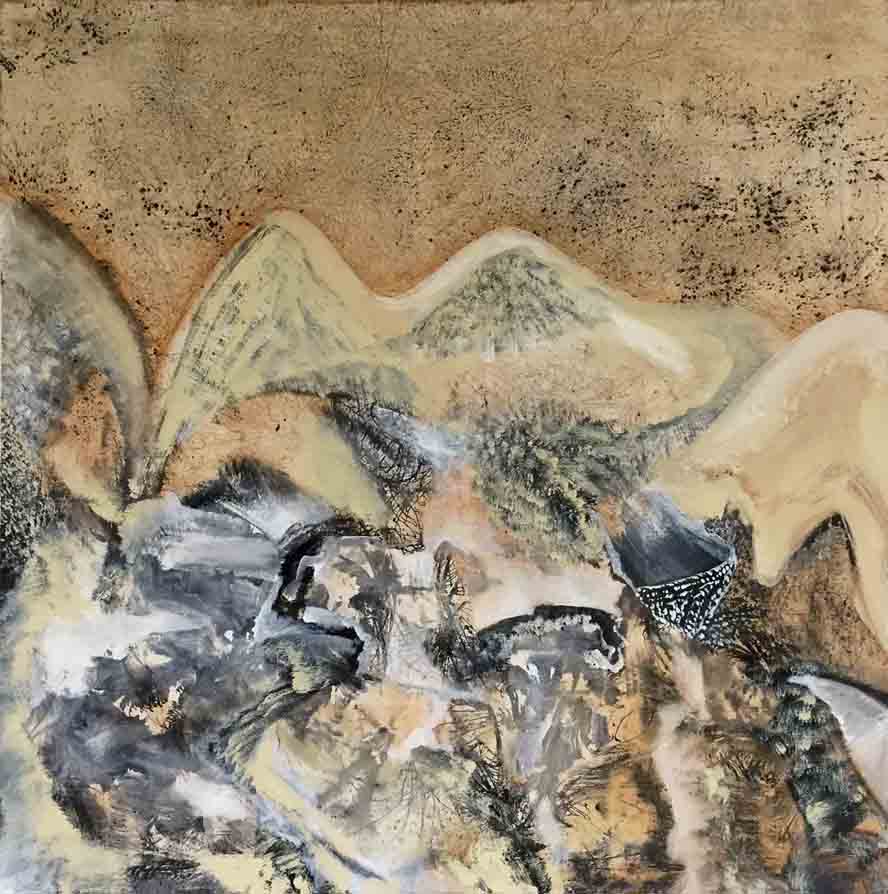
《河畔的风景》100×100cm 布面油画 2017年
“Northwest Complex” - Talk on Su Peng’s Painting
Author:Zhang Linjie
I am acquainted with Su Peng for many years, and know well about his growing path on painting. He drew my attention since he came to the university and showed great enthusiasm for the art. During his undergraduate studies, I planned an exhibition for him and other two students. I was surprised by their works, which were not mature enough on picture presentation, but full of passion. Su Peng didn’t talk much. Once we drunk together, he became very communicative like a typical Northwest man . I really appreciate his brightness and modesty.
I highly agree that one’s artistic quality shows his moral standing. A painter’s level is determined by his personality. Su Peng’s character conforms to his works. He is persistent on problem solving, but very humble in communicating with others. Just like his paints, they have objective images, but express in a implicit way. Throughout his development on painting, I find an element that he dedicates to presenting- “Northwest Complex”, which is contained in the creations of both his early and current periods. The picture styles and symbol options are accumulated from his temperament and memories. I tentatively divide Su’s works into four periods: Muddling Period, White Period, Material Language Period and Broad Image Period.
Muddling Period
In this period, he began his college studies. Free from the constraints of National Entrance Examination, he had a brand new understanding on painting and soon came to the stage of deconstruction training. Some images like birds, mountains, trees appeared on his canvas. In a variety of painting styles, techniques and color tones, he was also in a stage of seeking for more possibilities. The symbol of carve dwelling was seen then together with the mountain images. It’s the carve dwelling that makes him find an outlet of personal emotions.
White Period
In this period, he began to stay out the symbol of carve dwelling and paint the whole picture in white. You would feel at the snowy village of Chinese Northwest. The carve dwelling appeared faintly in the pure white surrounding, which was a scene seldom seen in the city, and even more a reflection of gradually disappearing rural culture. Many cultural phenomena in Chinese rural area became some fragmental memories. What Su Peng conveyed was to represent the fragments through his memories and to leave in the noisy urban life some signs of the sentiment for villages. These works were an exploration of formalism. Through the composition of points, lines and planes, more possibilities were discovered. But it’s hard to present the formalism, even harder to find a way to express his personal feelings properly, as it need a long and boring practice stage.
Material Language Period
The bottleneck in the White Period pushed him to search for new methods. He begun to notice material language. Material itself has words to say in painting, so many artists brought out the material solely as their creations. Some like Joseph Beuys, Antoni Tapies and Anselm Kiefer found the charm of materials and applied them on art expression. Su Peng realized it as well and different materials were used based on the element of “carve dwelling”. Meanwhile he became more particular about the pigments. The works in this period were maturer in the picture processing, and deconstructed more completely in content presentation. We could consider it as a period of focusing on technical problems settlement.
Broad Image Period
Su Peng’s painting came to a new level after figuring out the technical problems. The symbol of “carve dwelling” began to be vague till it disappeared. Instead, some broad images like mountains, stones, rivers and weeds were shown in the pictures. The painterly nature was diluted with the incidental performance. Mostly, the images in the painting were transformed occasionally. But he had a well control of incidental performance, which made his works better-considered. Although the symbol of “carve dwelling” disappeared, the painting color tones, structures, and images still all displayed the features of Chinese Northwest civilization. I consider Rock and Deadwood as the most representative creation. The weeds on the picture are full of wild vitality. They weave together to a net, which separates the viewers and the grand and intangible space behind, and isolates the modern and wild civilization, leaving us to think more. The Pilgrimage Road is another great work, which contains the images of traditional Chinese landscape but shows a rebellion against these images at the same time, and which reveals instinct humanity marks but they are concealed with rough brush. The upper part took up firmly the picture center like a flying stone. It’s to your heart’s content while viewing it, direct, crazy but well organized. It’s exactly the same as Su’s personality.
People who viewed his works of all the four periods will understand better about the developing process of Su’s “ Northwest Complex”. The images in the paintings change, but the emotions and pursuits never do. As a man from Northwest who lives in the South, the environmental and cultural differences make the complex more precious. It’s the complex that makes him create more great works continuously like flowing water.
Su Peng has his artist dream. He ever said to me, he didn’t rush for quick results, but to devote his whole life to leaving a position in the art history. I admire a person like him. The current art environment in China is pushed by profits, few people can get down to painting and spend time precipitating his art. But truly great art is derived from personal endless effort. It’s a long and tough process of self-denial. Only those who are in full preparation, courage and perseverance can move forward. I think Su Peng is such a man.
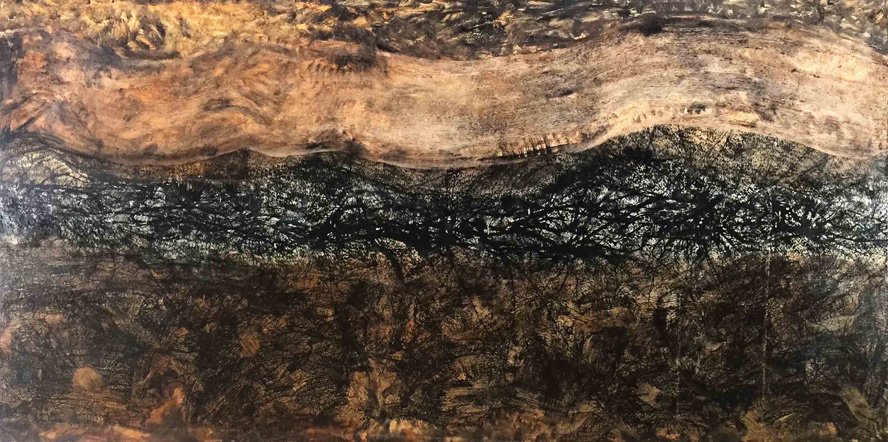
《黑老锅一线天》100×200cm 布面油画 2017年
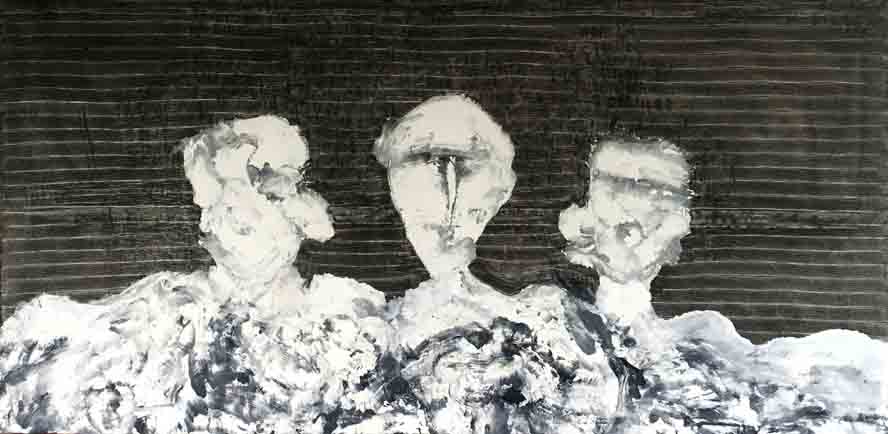
《黄土柱子之灵魂》100×200cm 布面油画 2017年
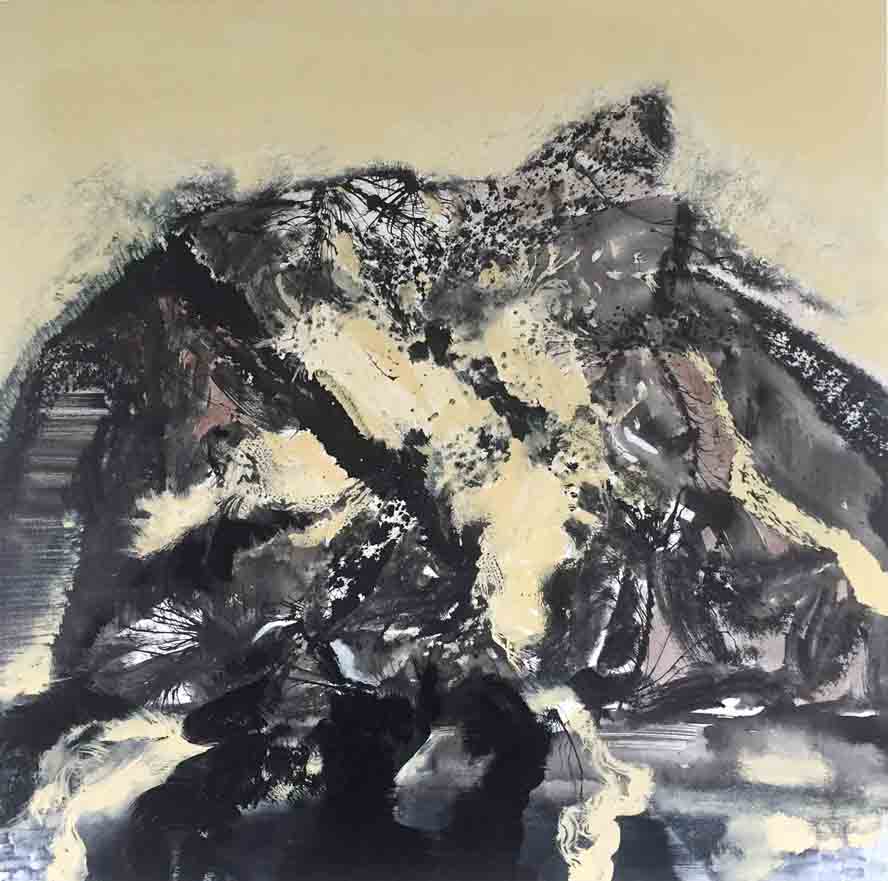
《水边的山河石》100×100cm 布面油画 2017年
苏鹏 1989年出生于甘肃庆阳,2014年毕业于南昌大学美术系油画专业。毕业后入驻南昌大学后街文化创意园,现为职业艺术家。
展览经历:
2012年油画作品《舞动》参加“南昌大学首届791艺术师生展”(南昌)
2012年油画作品《静》入选“江西省第七届青年美术作品展”(南昌)
2012年油画作品《对话》入选“江西省第二届油画展”并获三等奖 (南昌)
2013年油画作品《恋结》入选“生长”2013上海青年美术大展。在中华艺术馆展出 (上海)
2013年油画作品《念想》入选“绘画的品格”油画展,在大都美术馆展出,作品并被收藏 (北京)
2014年举办“孤独”的我们三人油画展 (南昌)
2014年举办“我之根本”八人油画展 (南昌)
2014年油画作品《铺陈》入选“江西省第八届青年美术作品展” (南昌)
2014年油画作品《传说》入选“江西省第十四届美术作品展” (南昌)
2014年油画作品《念米脂》入选“高原高原第四届西部美术展”获三等奖并被收藏 (西安)
2015年油画作品《传说》入选“深入生活、扎根人民,首届江西省优秀作品展”获优秀奖(南昌)
2015年参加“思、无界”第二届江西当代艺术展(南昌)
2016年油画作品《流年》入选第二届“独立的品格”当代艺术展,获优秀奖(北京)
2017 年参加“桥--上苑艺术馆国际创作计划开幕展” (北京)
编辑:马力
------------------------------------------
北京·上苑艺术馆 “国际创作计划”(艺术驻留) 常年接受申请
上苑驻馆艺术家的国际居留计划生活记实
就上苑“国际创作计划”答《中国新闻周刊》记者问
上苑艺术馆-程小蓓接受《上层》杂志专访
上苑艺术馆-程小蓓·答韩国光州《全南日报》记者问
程小蓓答《美术周刊》记者问
程小蓓就建筑艺术答诗人、建筑批评人问
美国威斯康辛大学-展出程小蓓摄影《活路》作品选登
【现场】《在可说的这一切》毋蓬勃个展 21日在上苑艺术馆
【现场】“无人栖居” 王毅、闫科含双个展
【现场】 记忆:后视镜中的戏剧——上苑艺术馆主题项目展
【现场】“中国的空间”丹麦艺术家安亚个展26日在上苑艺术馆
【上苑艺术馆】鸟巢展出2015驻馆艺术家作品同步认购价目表
【上苑艺术馆】2007-2008驻馆艺术家作品认购价目表
【上苑艺术馆】 2009-2010驻馆艺术家作品价目表
【上苑艺术馆】2011-2012驻馆艺术家作品认购价目表
【上苑艺术馆】2013驻馆艺术家作品认购价目表
【上苑艺术馆】2014驻馆艺术家作品认购价目表
【上苑艺术馆】2016上苑驻馆艺术家作品认购价目表
北京 上苑艺术馆-107平米房屋转让-相关资料及实景图
出租工作室-上苑艺术馆,电话:60635299
-------------------
北京 上苑艺术馆- 电话: 010-60635299 60635757
上苑艺术馆官网 http://www.syartmuseum.com/
文学艺术国际联盟(简称:国际文盟)网 :Website: http://www.inlac.cc/
上苑英文站点:http://resartis.org/en/residencies/upcoming_deadlines/?id_content=3938
交通指南 :
□北京东直门916路、942路到怀柔,转怀柔-沙峪口(上苑艺术馆)
□京承高速12出口 > 右拐过水渠西行2KM > 良善庄路口北行到底>右拐300m路北
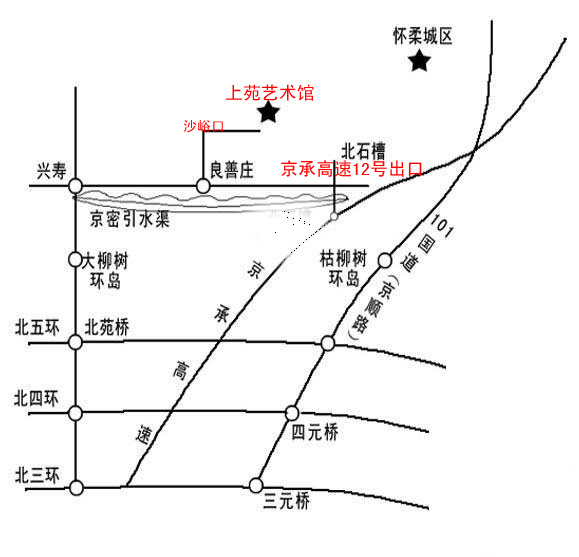
上苑艺术馆地图及卫星图
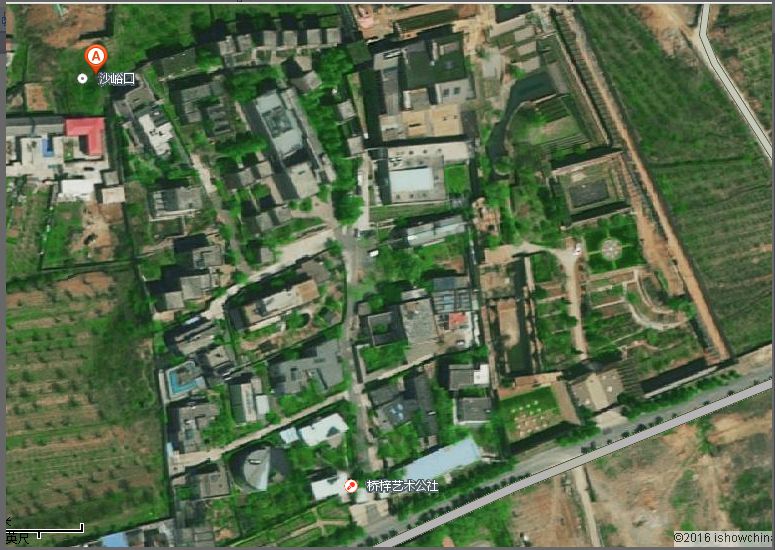
查看5469次
|
